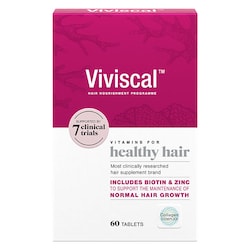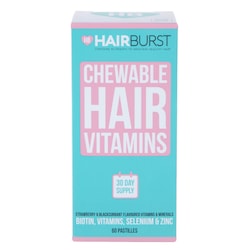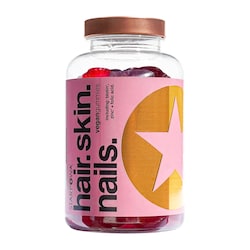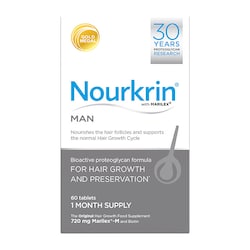15% off £25 OR 20% off £35
10 different curly hair types and how to look after them

Curly hair comes in all shapes and sizes. That’s why some products and care routines make one gal’s curly hair look wonderful but can also make another person’s look flat and lifeless.
There are several different curl types, each with their own unique traits and recommended regime to care for it. This guide should help you to distinguish different types of curls and help you figure out which one you have.
A little bit of this curly curiosity can help you find the best products, styling techniques and treatments for your hair – so let’s get into it!
What are the different types of curly hair?
Wavy, kinky, curly, coily… been wondering which title suits your hair the best? The thing is, everyone’s curls are different, and you can have curly, kinky, coily and wavy hair all on one head.
To try and make curly hair care a little easier, hair professionals have come up with several systems to help categorise curly hair.
One of the most-used and famous ways to categorise different types of curls is celebrity hair stylist Andre Walker’s Hair Typing System.1
This curl pattern chart can help you determine your hair type by matching a number to the shape your hair adopts when it grows from your scalp.
Here’s what the numbers mean on this curly hair chart:
P.S. don’t worry if you don’t fit perfectly into one category or sub-category as you may have a combination of a few hair types, which is very normal.
What are the 4 types of hair?
- Straight hair
- Wavy hair
- Curly hair
- Coiled hair
Type 1: Straight hair
If your hair falls straight down and doesn’t tend to wave or kink, then you’ve got straight hair. Straight hair tends to be shiny and sleek, but can also be frizzy if prone to dryness.
- Fine to coarse
- Curl resistant
- Normally appears hydrated/shiny
How to care for straight hair
- Most shampoos and conditioners out there are designed for straight hair unless stated otherwise.
- If your hair is on the oily side, still condition the ends but go for lighter formulas
- If it’s on the dryer side then go for nourishing products that are moisturising but not super heavy
Type 2: Wavy hair
Wavy hair is positioned somewhere in between curly and straight hair. It tends to fall in loose ‘S’ shapes and is more prone to dryness and frizziness.
- Coarse to thick
- Makes loose ‘S’ shapes
- Can be dry and frizzy
What are Type 2 curls?
When we refer to type 2 curls, we’re talking about the waves!
2A curly hair type
Tousled waves – like you’ve spent the day at the beach. Hair usually has some volume, but the waves sit close the head.
Can easily be straightened and weighed down if heavy styling products are used on it for a ‘limp and lifeless’ look.
How to care for type 2A hair
- Try using a water-based moose, like Naturtint Styling Foam, to create volume at the base of the hair to make it look fuller and fluffier
2B curly hair
These waves usually begin an inch or so from the scalp and are generally more defined than 2A type waves.
How to care for type 2B hair:
- Try to enhance what nature has already given you with a sea salt texturising spray made with natural sea salt
2C curly hair
2C curls begin as waves from the root with a more defined S wave throughout the whole hair. This wave type has much more volume and body, sometimes with some true curls thrown in.
Type 3: Curly hair
Curly type 3 hair gathers and winds around in a spiral shape to form curly ringlets.
- Can be dry as natural scalp oil can struggle to make its way down the spirals
3A curly hair
3A curls have defined loops the size of wine bottle corks, aka corkscrew curls! The 3A hair type can also be large buoyant loops.
- Sometimes shiny with a sheen
- Prone to frizz
How to care for curly hair (type 3):
- Use deeply conditioning treatments regularly to hydrate curly hair
How to care for 3A curly hair:
- Effective 3A curly hair products include a good curl cream to keep your hydrated and to enhance your curls
- Don’t use brushes, combs or even your hands on your hair unless you want a whole load of frizz!
- Give it a nourishing spray, like Noah Spray Conditioner, when it needs a lift
3B curly hair
The 3B hair type is defined by bouncy, springy ringlet curls that are about the same circumference as a whiteboard marker.
How to look after 3B curls:
- This hair type can get dry so invest in a styling product that hydrates as well as holds, like Shrub Curl Defining Cream
3C curly hair
3C curls are tight corkscrew curls which usually have the circumference of a pencil or drinking straw. It’s very densely packed and voluminous.
How to look after the 3C hair type:
- As with other curly hair types, 3C curls are prone to dryness, so try and use a specially formulated curly hair shampoo that’s designed to be used less regularly, like Afrocenchix – Swish Sulphate Free Shampoo
Type 4: Coily hair
Coily hair, aka kinky or afro-textured hair, is naturally spongy and very dry in texture.
- It can be fine and soft or coarse and wiry
- Can be small, very tight curls or zigzags from the scalp
- This hair goes through major shrinkage! So, it will be a lot longer when you stretch it out
4A curly hair
4A curls are dense, springy and about the circumference of a knitting needle.
How to look after the 4A hair type:
- Find a moisturising conditioner that you can style your hair with and leave in for extra nourishment, like Afrocenchix – Sheen Moisturising Hair Spray
4B curly hair
Kinky 4B hair is packed tightly together and can shoot out and bend at sharp angles, like ‘Zs’ as well as ‘S’s.
How to look after the 4B hair type:
- Hydrate 4B coils with moisturising creams like, Afrocenchix – Smooth Moisturising Hair Cream and style as usual
4C curly hair
Similar to the 4B texture, 4C curls are tightly coiled together but the strands are more fragile and sometimes so small you can’t really see the curls. This tight and often zig-zag patterned hair shrinks about 75% more than other hair textures!
How to look after curly hair 4C:
- This hair needs lots of moisture and maybe something to coax out those coils and stretch them out a little
- A combination of natural oils can be very beneficial for this hair type, like Afrocenchiz – Seal Moisture Locking Hair Oil
Is my hair wavy or curly?
Still can’t tell where you fall on the curly hair scale? Is it wavy or curly? If you have one of these in-between styles, e.g. wavy ‘s’ shaped hair with full ringlets scattered throughout, that’s totally fine! Just try the hair care tips for both sorts of hair and find a balance that works best for your locks.
Last updated: 15 March 2021



































